The World Living Soils Forum: Soil health action from the private sector
On June 1st & 2nd, the very first edition of the World Living Soils Forum (WLSF) was held in Arles-en-Provence, France, in an effort to “Mobilize and Act for Living Soils”.
The event was launched as part of the sustainability approach of Moët Hennessy; a multinational corporation that represents the Wine & Spirits division of LVMH Group.
The private sector is an important player in advancing global soil health, not least in the context of producing products that utilise natural resources. Many corporations are investing in scaling their environmental approaches, and Moët Hennessy is showing concrete commitment to ecological and social responsibility through their sustainability platform, Living Soils Living Together.
At the WLSF, researchers, experts, public institutions, journalists, trade associations and other actors from across the private sector gathered to attend conferences, round tables, masterclasses and workshops exploring the preservation of living soils and the sustainability of the wine and spirits industry.
With over 33% of world soil already degraded, Moët Hennessey brought this forum together to consider how the wine industry interacts with the soils, and how to better protect them. The objectives of the forum were to:
Connect people who are committed to soil regeneration,
Share concrete actions for sustainable and regenerative viticulture and agriculture,
Strengthen the link between science, innovation and practical application of soil health action, and
Gather science-based indicators and methodologies that monitor and champion soil health.
But despite being a relatively small agricultural sector, this isn’t the first time that the wine and spirits industry has mobilised to bring people together and balance the needs of nature, communities and business in the face of climate change. In 2018, for example, the launch of the Porto Protocol marked the Climate Change Leadership Summit.
The Porto Protocol is a global community that includes all sectors along wine value chains. This means everyone from grape growers to restauranteurs to scientists to packaging companies. Everyone. Their objective is to mitigate climate change through sharing resources, best practices and experiences from all stakeholders. Almost like it’s CA4SH’s viticultural twin!
What is so unique about the WLSF is not only its particular focus on soils but the approach to community and gathering that took place in this incredible exchange of knowledge and solutions. With the audience sitting in a tight-knit circle around the panel and presenters, the intimate setting made space for meaningful interactions and informative dialogue around scientific approaches to advancing soil health.
“We want this Forum to be the nexus of a global conversation that will enable the entire industry to take action quickly and more effectively within a rigorous scientific framework.”
To contribute to the WLSF’s objective of gathering and sharing methodologies for monitoring and advancing soil health, Dr Leigh Winowiecki, CIFOR-ICRAF Soil and Land Health Global Research Lead and co-leader of CA4SH, was invited to share her experiences in creating and implementing the Land Degradation Surveillance Framework (LDSF).
The topic of this workshop was Measuring Carbon, in which Dr Winowiecki, Dr Pascal Boivin (Professor and Dean of the Agronomy, Faculty at the University of Applied Sciences of Western Switzerland) and Quentin Sannie (Founder & President of Genesis, the first global agency to measure the environmental impact of agricultural supplies) discussed how and why we measure carbon in soils.
Dr Winowiecki underscored three key principles that are fundamental to methodologies used in measuring soil carbon. Namely, they need to track changes over time, address the drivers and complexities of restoration, and they must be variable across different spatial scales. Because of the nature of these principles, she suggests methods that are quantifiable and rapid. Luckily, she noted, carbon readily responds to management interventions, which is why it is so commonly used as an indicator for soil health and to track changes over time.
In her lab at the World Agroforestry Centre (ICRAF) in Nairobi, Kenya, Dr Winowiecki and her team process up to 600 soil samples in a day under the LDSF by using soil spectroscopy; the measurement of light absorbed by soil in the visible to infrared spectrums.
This methodology is chemical free, measures multiple indicators (like carbon, nitrogen, calcium and potassium), is 1/10th cheaper than traditional methods, and has enabled her and ICRAF to measure variability across landscapes.
But the best part is that this method invites everyone to participate.
“One of the things we are doing in this monitoring framework is engaging the stakeholders, that’s the rangeland the pastoralist, the farmers, the growers, in the monitoring, and we even change the word from monitoring to learning. So it’s getting the farmers engaged in this learning process in terms of where to take the soil sample, how many soil samples, to what depth all the way through the analysis to the result interpretation. We can not separate the measurements from the farmers.”
One theme certainly ran recurrently at the WLSF; soil health action has a space at the table for everyone.
To close the session, moderator Tobias Webb asked the speakers what takeaway they would like the audience to remember most. Dr Leigh Winowiecki said, “we all have the responsibility to restore and build healthy soil.” Through collective organising from the private sector, actors like Moët Hennessey are effectively connecting knowledge with practice.
We’ll cheers to that!

